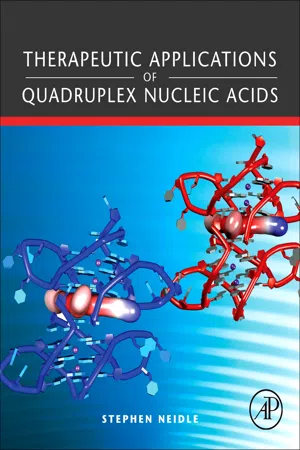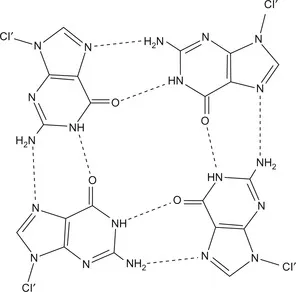
- 208 pages
- English
- ePUB (mobile friendly)
- Available on iOS & Android
Therapeutic Applications of Quadruplex Nucleic Acids
About This Book
The study of G-quadruplexes has emerged in recent years as an important focus of research in nucleic acids. This is now a rapidly growing area, not least because of its potential as a novel approach to cancer therapeutics, and there is much current activity on the design of quadruplex-selective small-molecule ligands and the study of their cellular effects. This timely publication gives a uniquely integrated view of quadruplex nucleic acids that will be a major resource in future drug-discovery strategies.
Therapeutic Applications of Quadruplex Nucleic Acids provides a single comprehensive survey that describes and assesses recent advances in quadruplex therapeutics and targeting strategies. It also covers the underlying fundamentals of such topics as quadruplex structure, small-molecule recognition, biological roles of genomic quadruplexes, and quadruplex informatics.
Written by a world leader in this field, this book is a vital resource for researchers in medicinal chemistry, chemical biology, structural biology, drug discovery, and pharmacology in cancer and other therapeutic areas, as well as for chemists and biologists working on nucleic acids, and will be useful for both active researchers and students in these areas.
Frequently asked questions
Information
Helical Arrangements of Guanosine Repeats
 |
| Figure 1–1 The structure of the G-quartet, showing the hydrogen bonding arrangement between the four coplanar guanine bases. |
The Rise of the Quadruplex Concept
Table of contents
- Cover image
- Table of Contents
- Front-matter
- Copyright
- Dedication
- Preface
- 1. Introduction
- 2. DNA and RNA Quadruplex Structures
- 3. The Structures of Human Telomeric DNA Quadruplexes
- 4. Telomeric Quadruplex Ligands I
- 5. Telomeric Quadruplex Ligands II
- 6. The Biology and Pharmacology of Telomeric Quadruplex Ligands
- 7. Genomic Quadruplexes as Therapeutic Targets
- 8. RNA Quadruplexes
- 9. Design Principles for Quadruplex-binding Small Molecules
- 10. The Determination of Quadruplex Structures
- Index